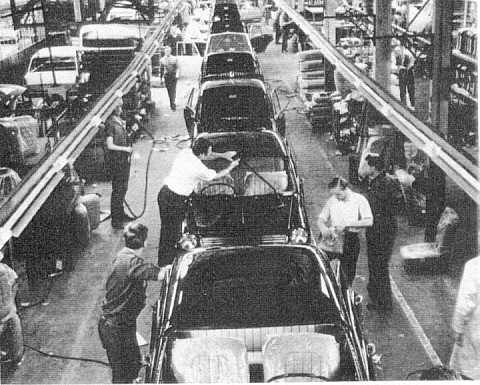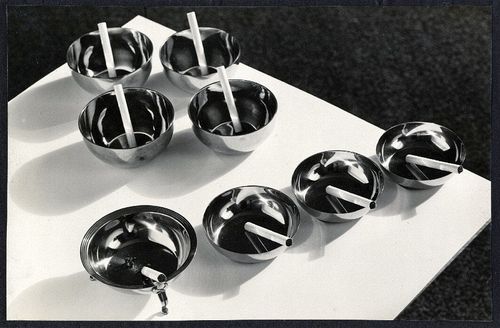THE PSYCHOLOGY OF ADVERTISING
William Bernbach – “Advertising is fundamentally persuasion and persuasion happens to be not a science, but an art”
As establish in the previous blog-post, the nature of advertisement changed forever as a result of “mass-production”, it was now easier than then ever for companies to advertise their products. Whilst creating obvious advantages this also created a significant barrier to companies trying to sell their products to consumers, a rise in competition due to this increased practicality and availability.

As people now had a much greater market in terms of available products, it was now more important then ever for companies to ensure that consumers were most likely to be drawn into and attracted to that particular companies product alone. For example, if a consumer has a choice of 10 available cigarette brands, than they will be bound to go for the one which appeals to them the most.

From the 1920s onward, companies began to tap into consumer psychology, realizing the link between how presentation of an advertisement may effect the connections/associations the viewer has with such a product. As psychology slowly began to grow in influence and the impact it had on the consumer, this was met with criticism from various writers and philosophers at the time, seeing the artistic methods used by companies as exploitative – a form of opportunism playing on sub-conscious urges, thus manipulating consumers into purchasing products. On the other hand many avant-garde artists were prepare to dismiss any moral restrictions, in celebration of the opportunity this allowed artists for creative expression.
GROWING LINK BETWEEN ART AND ADVERTISING
Modern advertising began to emerge and develop soon after the First World War. In the U.S. Various advertising groups and agencies can be largely credited for this growth, groups such as N. W. Ayer, J. Walter Thompson and McCann Erikson, who formed part of the ‘American Association of Advertising Agencies’.
Additionally 1920 led to the creation of the Art Directors’ Club, which helped to create the bridge between art and the commercial work, creating an organisation whereby artists could be commissioned to produce work for these newly developed advertising agencies – an incentive for better and more insightful artistic work to be produced for advertising purposes . Also in Germany, designers and photographers were brought together through the establishment of the Deutscher Gebrauchgraphiker, another example of the link between art and design.
Specialized magazines encouraged the use of photography and colourful graphic design, to create more realistic and visually exciting formats of work – moving away from less accurate and tedious methods of design and artistic presentation, such as sketching and line-drawings.

RISING INFLUENCE OF PHOTOGRAPHY
By the mid 1920s, advertising found a new and powerful way which photography could have an influence on advertising – using photography to show with clarity, the usefulness, comfort , luxury, (along with other benefits) of a particular product. A growing number of photographers including Edward Steichen and Andre Vigneau, began to specialize in ‘publicity photographs’. Steichen for example, was commissioned to photograph Camel cigarettes, in which he experimented with chiaroscuro lighting to create dark, gripping and enticing images of cigarettes, showing them in a charming and exciting way.
Although the health effects of smoking were perhaps less known or considered in 1920s, it is still interesting to consider that photography could be used to promote a product such as cigarettes, in such an attractive manner. From a modern perspective at least, it is easy to question the morality of such forms of advertising – the use of lighting and other photographic techniques to manipulate a ‘realistic’ interpretation of a product which is extremely unhealthy and highly addictive (to the extent that it is banned as a form of advertising in the UK nowadays).
However, soon many photographers working in the advertising industry soon sought to distance themselves from the restrictive and controlling task of ‘promotional advertising’, and instead venture into more experimental, avart-garde work. Many previous publicity photographers began to concentrate on creating a mood associated with an object, rather than just objectively recording the object alone. In order to achieve this, photographers started to follow the ideology and principles of the ‘Bauhaus Art School’ and the surrealists, evoking techniques such as tilted camera angles, lining up rows of objects, photograms, superimposition, solarization altering images and X-Ray techniques.

As a result of this change in attitudes – photographers began to diverge into advertising for things other than basic consumer products, such as manufacturer brochures and seasonal catalogs of big department stores, expensive jewelry and designer products. Subsequently the type of work photographers were required to do altered dramatically. At first, photographers had a degree of control over their equipment and photo-shoots, free to delve into different and varied means. However, soon a much greater degree of control was imposed on photographers concerning what they can and could not do, as photographic agents, copy-writers and editors became increasingly involved in the production of images, commissioning and the organisation of photo-sessions.
